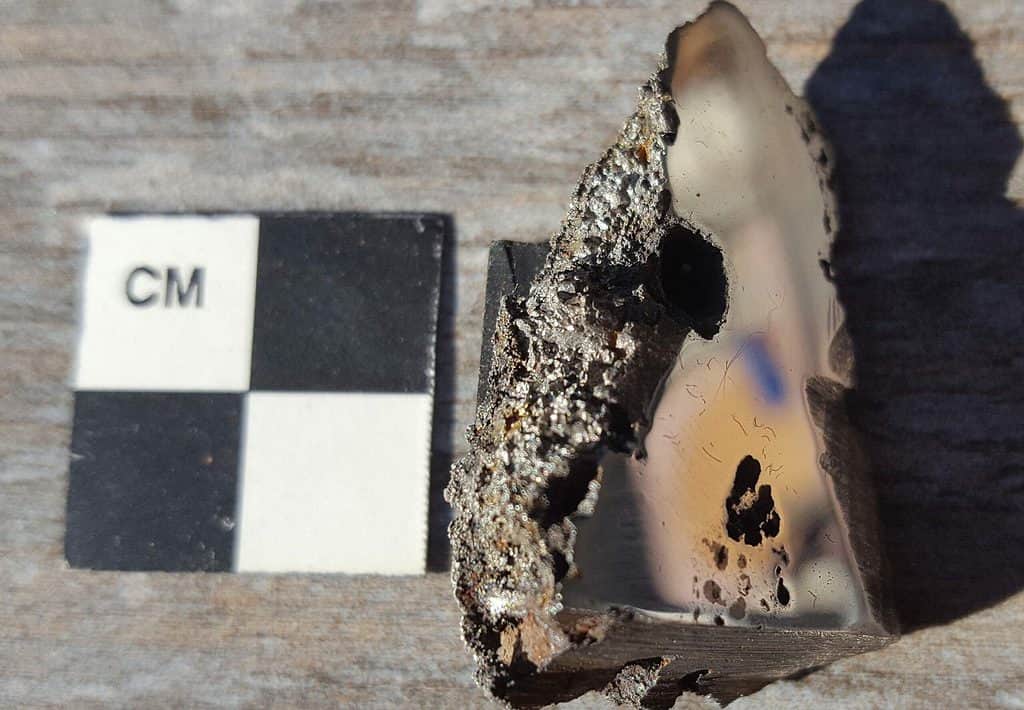
A team of researchers in Canada discovered two new minerals and potentially a third after reviewing a slice of a 15-ton meteorite that landed in east Africa. The meteorite, the ninth largest ever found at over two meters wide, was found in Somalia in 2020 (despite locals claiming it was known to them over generations) and named Nightfall.
Scientists, however, have named the meteorite El Ali because it was found near the town of El Ali in the Hiiraan region. A slice of the iron-based meteorite was sent to the University of Alberta in Canada, already housing a meteorite collection, to be classified. When doing so, the researchers noted the “unusual” minerals in the slice.
Chris Herd, the curator of the museum meteorite collection, worked together with Andrew Locock, head of the university’s Electron Microprobe Laboratory – involved in other new mineral descriptions, such as Heamanite-(Ce). They realized on the very first day of their analysis that there were two new minerals, something they say is very rare.
“Whenever you find a new mineral, it means that the actual geological conditions, the chemistry of the rock, was different than what’s been found before,” Herd, also a professor at the university, said. “That’s what makes this exciting: In this particular meteorite you have two officially described minerals that are new to science.”
Brand new minerals
The newly discovered minerals were named elaliite and elkinstantonite. The first got its name from the meteorite itself, El Ali, while the second one was named after professor Lindy Elkins-Tanton, the lead investigator at NASA’s upcoming Psyche mission – which hopes to investigate an asteroid that orbits between Mars and Jupiter.
The minerals have been created in a lab before, but were never before observed in nature. Researchers weren’t even sure if they appear in nature or not.
There’s a third mineral also under consideration, but not confirmed yet. If more samples from the massive meteorite would be obtained, there’s a chance that even more minerals could be found, the researchers said. The meteorite was moved to China in search of a buyer and it remains to be seen if more samples will be available.
In the meantime, the two researchers are still going through the minerals to try to determine what they can tell us about the conditions in the meteorite when it was formed — which could in turn tell us a lot about our solar system’s history.
That’s Herd’s area of expertise. “I never thought I’d be involved in describing brand new minerals just by virtue of working on a meteorite,” he said in a statement.
The researchers are also optimistic over potential uses for the minerals down the line. “Whenever there’s a new material that’s known, material scientists are interested too because of the potential uses in a wide range of things in society,” Herd said. But they warned there’s still a lot of research to be done before identifying any potential uses.









